Killers of the Flower Moon : The true story behind Scorsese's film
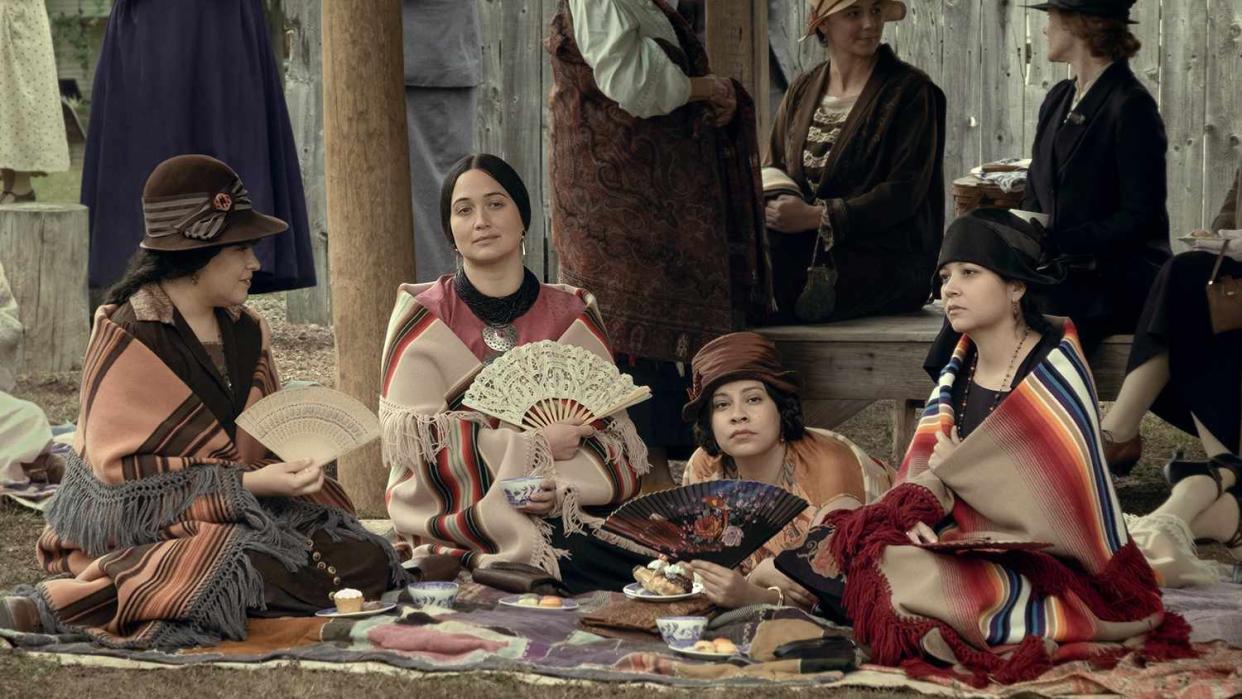
- Oops!Something went wrong.Please try again later.
- Oops!Something went wrong.Please try again later.
- Oops!Something went wrong.Please try again later.
- Oops!Something went wrong.Please try again later.
- Oops!Something went wrong.Please try again later.
- Oops!Something went wrong.Please try again later.
Following its premiere at the 2023 Cannes Film Festival, Killers of the Flower Moon was hailed as "magnificent" and "the best performance of Leonardo DiCaprio's entire career." DiCaprio stars in this three-and-a-half-hour epic from director and co-writer Martin Scorsese as Ernest Burkhart, the husband of a Native American woman named Mollie Burkhart (Lily Gladstone), whose family played a key role in the Osage murders that shocked Oklahoma in the 1920s. Robert De Niro costars as William Hale, a wealthy and influential rancher in Osage County and Burkhart's uncle, along with Jesse Plemons as FBI agent Tom White
Scorsese's film is based on the nonfiction book Killers of the Flower Moon: The Osage Murders and the Birth of the FBI, written by journalist David Grann. In a 2017 review, EW's critic gave the book an A, calling it "a rich page-turner with a tangible frontier twang." Grann's work digs deep into the true crime cases at the center of the story, while also offering historical context for the Osage Nation and the lawmen from a brand-new federal agency who descended on their land. Here's what Grann uncovered, and how Scorsese interpreted it.
Warning: This article contains spoilers for Killers of the Flower Moon.
The Osage Nation
Originally located in the Ohio and Mississippi River valleys, the Osage Nation (or, as they call themselves, the Wahzhazhe) were part of the forcible displacement of Native Americans by the United States government in the 19th century. Eventually, the Osage settled in "Indian territory," in modern-day Oklahoma. Their people legally purchased the reservation land, which made it more difficult for the U.S. government to impose a system of "allotment," under which Native land was carved up and given away to white settlers.

Apple TV+ Lily Gladstone in 'Killers of the Flower Moon'
In 1906, Osage Principal Chief James Bigheart, along with a half-Native lawyer named John Palmer, negotiated a deal with the U.S. government giving each Osage member a headright, or share, in the tribe's mineral trust. Headrights could not be bought or sold, only inherited. This became extremely important just a few years later, when oil fields were discovered under the Osage land.
With much of the profits from the subsequent drilling legally belonging to the tribe, by the early 1920s, the members were the richest people per capita in the world. This attracted scores of swindlers, con artists, and corrupt businessmen, all of whom hoped to get a piece of the Osage's wealth either legally, through the "guardianship" system that put white people in charge of Osage fortunes, or illegally, through murder and theft.
The Reign of Terror
In 1921, two Osage members, Anna Brown and Charles Whitehorn, were murdered within days of each other under suspiciously similar circumstances. Both had been shot, and their bodies had been dumped in isolated rural areas. Shortly thereafter, another Osage man, Henry Roan (Anna's cousin), was discovered dead behind the wheel of his car. He had been shot in the back of the head.
Twenty-four people were eventually murdered in what the tribe began to call the "Reign of Terror." Some victims, like Osage rodeo star William Stepson, were poisoned. Others simply vanished or were killed execution-style. All of the victims were wealthy Native Americans, save for two: a white oil man named Barney McBride, who was an Osage ally, and an attorney named W. W. Vaughan. Shortly before his death, Vaughan called the Osage County Sheriff's office, saying that he had important information that could help solve the killings and that he would be coming from Oklahoma City on the next train. He never arrived. Even the dogs Osage people had bought to protect their homes were mysteriously dying.

Apple TV+ Lily Gladstone and Leonardo DiCaprio in 'Killers of the Flower Moon'
The book Killers of the Flower Moon revolves around Mollie Burkhart, an Osage woman whose three sisters and mother all perished under mysterious circumstances. Her sister, Minnie, and mother, Lizzie, both weakened and eventually died of what doctors called "peculiar wasting illnesses," while her sister, Anna Brown, was the victim of the murder that kicked off the Reign of Terror. But it was the death of Mollie's third sister, Rita Smith, Rita's husband, Bill, and their servant, Nettie Brookshire, in an explosion at their home in Fairfax, Okla., that led the Osage Tribal Council to appeal to the Department of Justice for help.
Mollie's husband (a white man named Ernest Burkhart), Ernest's brother, Bryan, and their uncle, William Hale, would all be implicated when the conspiracy to kill Mollie's family was eventually uncovered.
The FBI investigation
In the aftermath of Brown's death, Mollie Burkhart hired private investigators to find her murderers. Four years later, little progress had been made. Then, in the summer of 1925, J. Edgar Hoover — head of a brand new government agency then referred to as the Bureau of Investigation (which would later become the FBI) — called one of his agents to Washington, D.C.
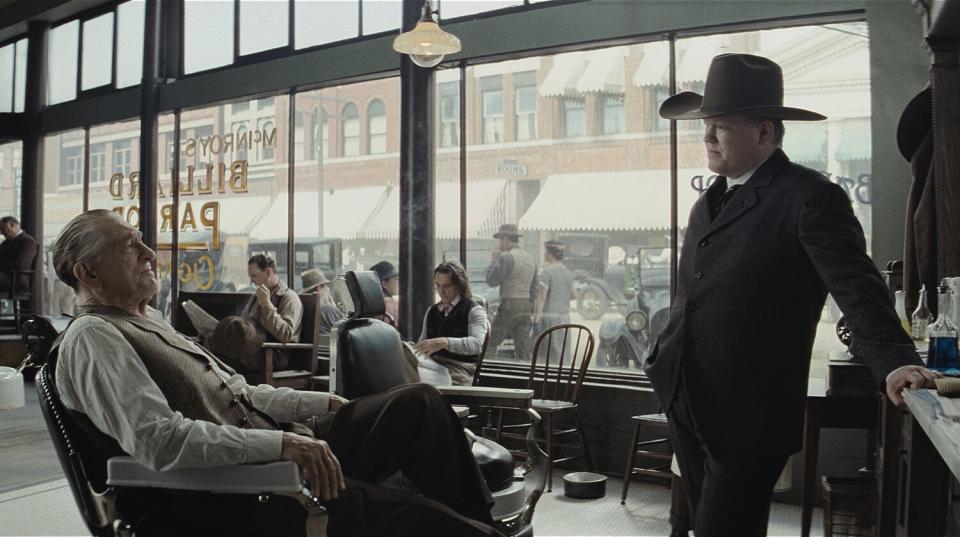
Apple TV+ Robert De Niro and Jesse Plemons in 'Killers of the Flower Moon'
The agent was Tom White, the son of a Texas sheriff who began his career in law enforcement hunting horse thieves and outlaw gangs as a member of the Texas Rangers. Hoover sent White to head the bureau's Oklahoma City field office, a lawless region that was considered the last outpost of the Wild West. There, he gathered a team that included John Burger, an experienced investigator who was well-known in Osage County, as well as several undercover operatives. One posed as an insurance salesman, another as a cattleman. A third was an American-Indian agent who also went undercover.
Over the next few months, White and his team uncovered evidence that William Hale had not only approached several local career criminals offering to pay them for the murder of Anna Brown, but also hired multiple people to build and detonate the bomb that had killed Rita and Bill Smith. Shockingly, Ernest Burkhart had helped set up the explosion against his sister-in-law and her husband, while his brother Bryan had assisted in Anna's murder. Mollie was also supposed to be in the home of Rita and Bill the night they died, but had changed her mind at the last minute — meaning that her husband had intended to kill her, too.
The trial
On Jan. 4, 1926, William Hale and Ernest Burkhart were arrested for the murders of Bill and Rita Smith and Nettie Brookshire. Urged on by the testimony of an incarcerated outlaw named Blackie Thompson, Burkhart confessed to his role in the plot and identified a man named John Ramsey as the "triggerman" who shot Henry Roan.
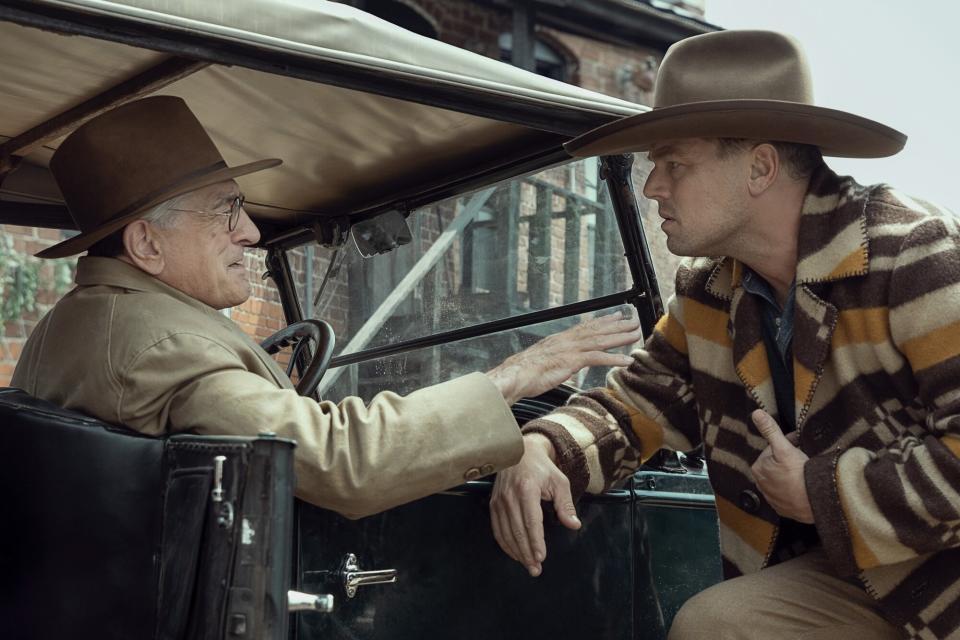
Apple TV+ Robert De Niro and Leonardo DiCaprio in "Killers of the Flower Moon"
On March 12, 1926, a preliminary hearing was held in Pawhuska, Okla. Fearing for his life, Ernest recanted his testimony but eventually turned around and testified against his uncle — a powerful man with considerable influence in Osage County — in both state and federal court. Hale and Ramsey's first trial for the murder of Henry Roan ended in a hung jury, but both men were found guilty of first-degree murder in a retrial. Kelsie Morrison, another "triggerman" who confessed to the murder of Anna Brown, was convicted as well.
Hale would end up serving 18 years in Leavenworth, a federal prison in Kansas. The warden? None other than Tom White, who came to greet Hale upon his arrival at the penitentiary. He was paroled in 1947, as was John Ramsey. Burkhart was released in 1937, but went back to prison after robbing a bank and spent his final years living in a trailer with his brother, Bryan. Mollie divorced Ernest during the trial, remarried in 1928, and died in 1937 at the age of 50.
Unanswered questions
While writing Killers of the Flower Moon, journalist David Grann traveled to Oklahoma to meet with members of the Osage Nation, including Ernest and Mollie's granddaughter, Margie Burkhart. While he was there, interviews and archives turned up evidence of more mysterious deaths in Osage County that were never investigated.
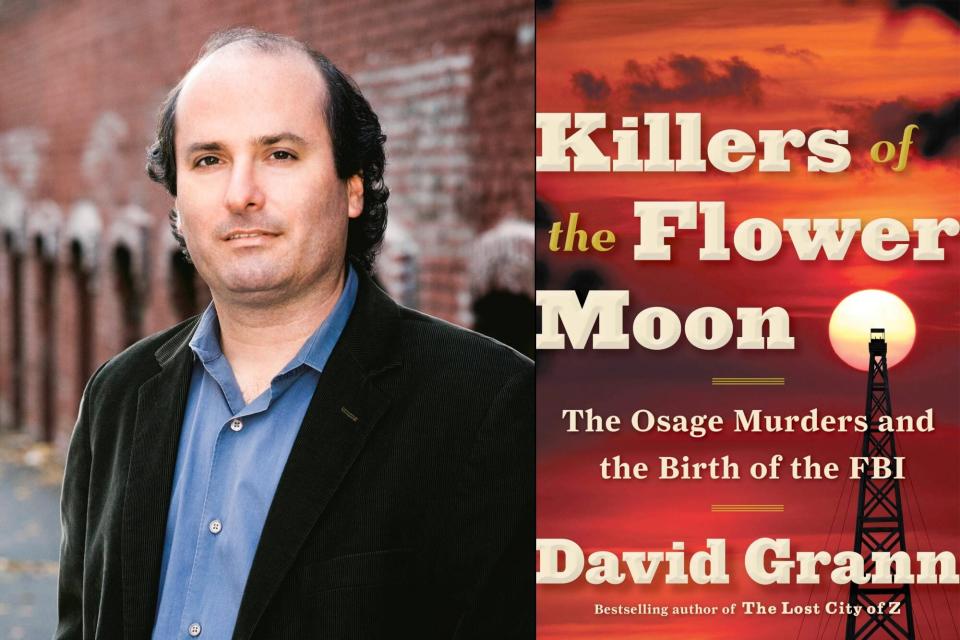
Matthew Richman; Doubleday Publishing
Grann's research led him to conclude that the systematic killings of Osage people for their oil headrights was "a vast criminal operation that was reaping millions and millions of dollars" through insurance fraud, embezzlement, and non-Osage people murdering their Osage spouses for money. William Hale and Ernest Burkhart had taken the fall, but "virtually every element of society was complicit in this murderous system." And most of them had escaped with zero accountability and millions in Osage wealth.
Restoring trust
Martin Scorsese and his cast and crew spent significant amounts of time with Osage historians and tribal leaders while developing the film adaptation of Killers of the Flower Moon. Scorsese and his co-writer Eric Roth reportedly rewrote their script after these meetings, changing the focus of the story from the development of the FBI to the culture and experiences of the Osage people.
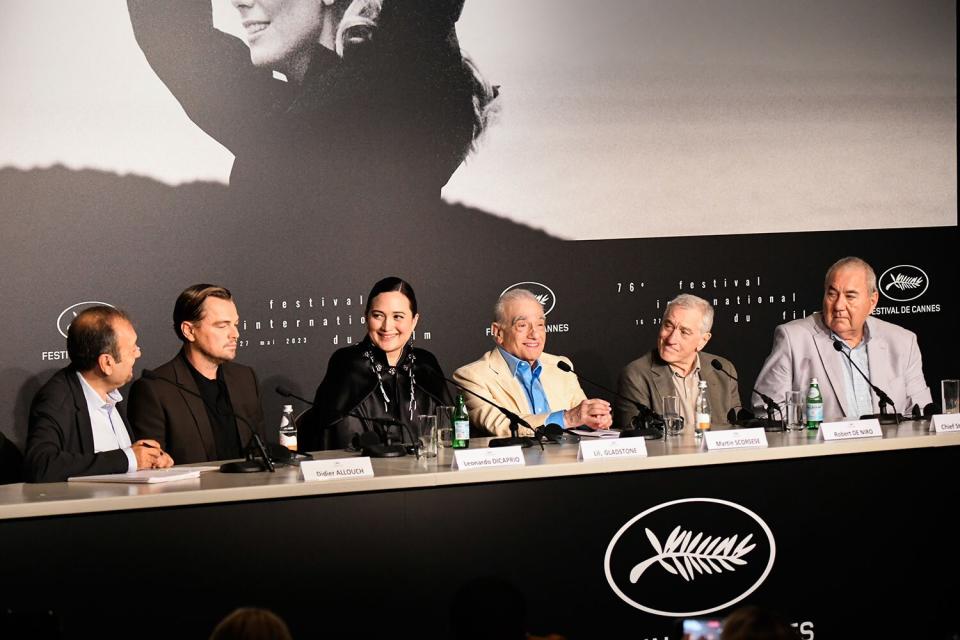
Stephane Cardinale/getty
In a press conference following the film's world premiere, the current leader of the Osage Nation, Chief Standing Bear, described Killers of the Flower Moon as a story about trust — between Mollie and her husband, as well as the Osage and the outside world — and the "deep betrayal" of that trust. "My people suffered greatly, and to this very day, those effects are with us," he said. "But I can say, on behalf of the Osage, Marty Scorsese and his team have restored trust, and we know that trust will not be betrayed."
Related content:

